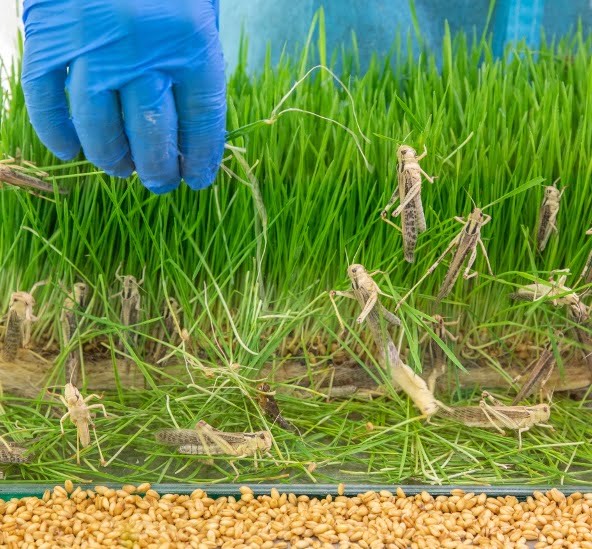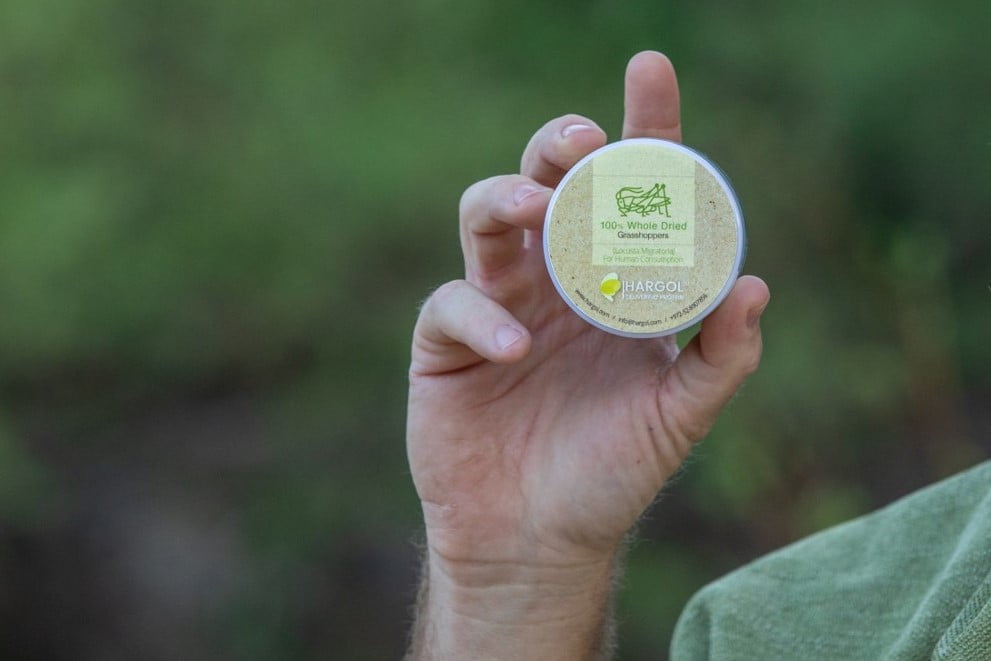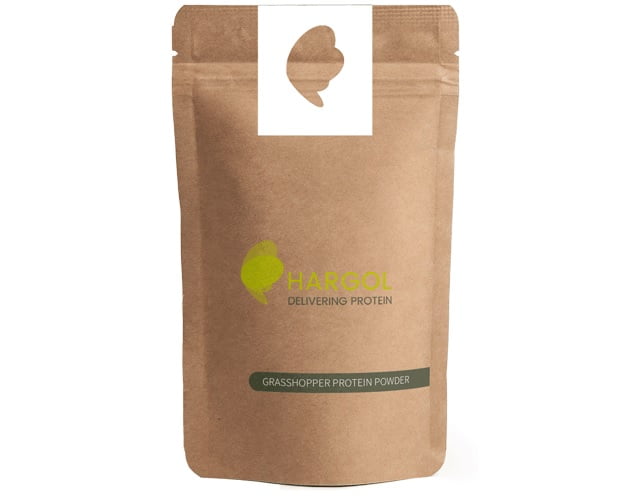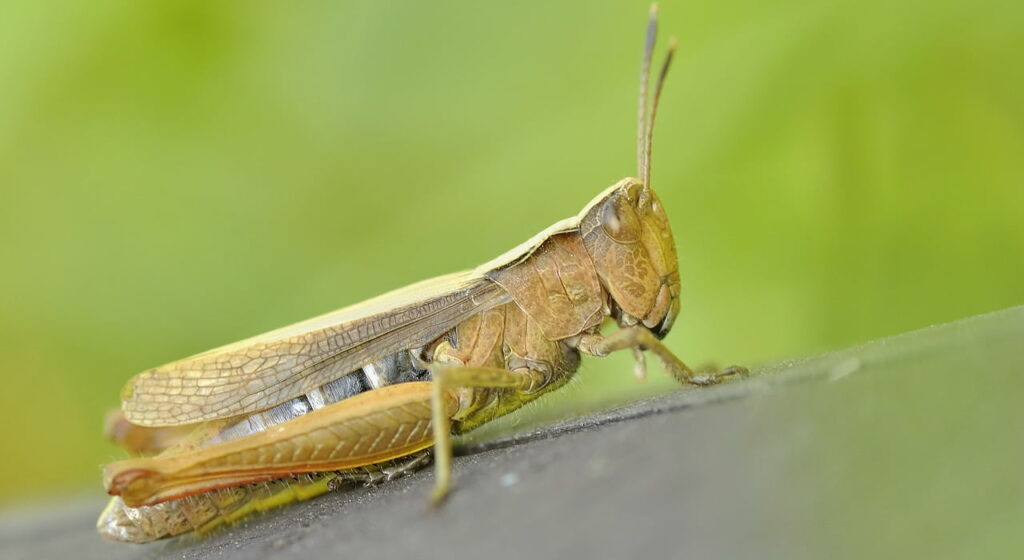This article was written for NoCamels by ZAVIT – Science and Environment in Israel.
As the only kosher edible insect, grasshoppers are uniquely positioned to appeal to Israeli and Jewish cuisines. Israeli company Hargol FoodTech, the developer of a farm system for sustainable grasshopper protein production, has been all over the opportunity, pioneering the commercialization of grasshopper farms.
Since 2014 when the company was first founded, Hargol has been producing supplements, meat replacement products, and grasshopper protein powder containing more than 70 percent protein and including essential amino acids with zero saturated fats and cholesterol.
SEE ALSO: Grasshopper Protein Food Tech Startup Hargol Raises $3M

The award-winning Hargol – Hebrew for grasshopper – is tapping into two key elements driving the global food and agriculture ecosystems – nutrition and sustainability.
And with a new line of grasshoppers, Hargol is hoping to bring this unique nutritional source to more markets.
“Hargol is about delivering an alternative protein that is healthier for the environment, healthier for humans and animals, and that is safer and more efficient to produce,” said the company’s CEO and co-founder Dror Tamir at the recent Future of Agritech Conference in November. “Grasshoppers are amazing insects that provide a wide range of benefits,” he said, adding it could appeal to a wide range of communities.
“If you read the Bible, grasshoppers are the only insects that are approved as kosher. If you open the Koran, you can also see that the Prophet Muhammad ate grasshoppers as well, so it is also halal for Muslims. And you can even go to the New Testament because John the Baptist [ate] grasshoppers with honey. So for all three religions, grasshoppers are the perfect food… a Biblical food,” he said.
It’s no wonder Hargol’s relatively new line of theological food products is called Biblical Protein.

The insect protein market
The UN’s reported projections of the world population reaching 9.8 billion by 2050 has raised concerns over the instability of global food systems, especially when it comes to supplying enough protein to meet future demand. Insect protein supplements may become a more integrated part of people’s diets.
A 2019 study showed that many parts of Asia, Africa, Latin America, and Oceania use edible insects as a major source of protein and that “entomophagy [the practice of eating insects] is experiencing a steady increase worldwide, despite its unfamiliarity to the consumers influenced by Western eating habits.”
Presently, insects are already incorporated into national cuisines in China, Thailand, India, Japan, Cambodia, Cameroon, the Democratic Republic of Congo, Ghana, Botswana, Uganda, and Mexico, among others.
A recent analysis of the insect protein market has identified North America and Europe as the most lucrative markets, with tremendous growth potential. Global revenue from the insect protein market is currently estimated at $62.55 million and is expected to grow at a CAGR of 20.96 percent through 2025.
What insects do humans eat?
Out of the more than 2,100 known edible insect species, beetles are the most frequently consumed, followed by caterpillars, bees, wasps, and ants.
Grasshoppers and locusts are the fourth most consumed group of insects in the world, according to a 2017 study.
Rather than consuming them whole, current trends involve the industrial farming of insects in a variety of forms such as organic waste and for the production of neutral-flavored protein powders — a move that could potentially mitigate food waste generated by the service industry.
Food tech startups around the world are keen on establishing sustainable production lines that with minimal environmental impact, relative to conventional farming ventures.
According to the Food and Agriculture Organization (FAO), the global livestock industry is responsible for 14.5 percent of global greenhouse gas emissions. Most of the emissions are related to beef and dairy production, contributing 41 percent and 20 percent of total GHGs in the sector, respectively. GHGs contributions from pork, buffalo meat, chicken, and eggs each amount to less than 10 percent.
Insects, on the other hand, have a much smaller footprint. Farming mealworms, crickets, and locusts emit about 100 times less greenhouse gases than swine and cattle.
Sign up for our free weekly newsletter
SubscribeInsects also require significantly less food than raising beef. For example, crickets only require 2kg of feed for each kilogram of body weight gain, while cattle require 10kg of feed for each kilogram of weight. Farming insects could also alleviate issues pertaining to land shortages as livestock pastures account for 70 percent of all agricultural land.
Hargol – sustainable grasshopper farming
For grasshopper farming too, significantly less land, water, and feed requirements are needed compared to the inputs required for traditional livestock and plant proteins.
According to Hargol, grasshoppers are up to 20 times more efficient than cattle in feed conversion, reduce greenhouse gas emissions by 98.8 percent, consume 1,000 times less water, require 1,500 times less arable land, and embody near-zero waste farming.

And grasshoppers may be healthier. Unlike black soldier flies, mealworms, and crickets who eat almost any organic matter and thus increase risks of contamination, grasshoppers are picky eaters. They restrict their diets to fresh grass free of pesticides and fertilizers. This is also where they obtain their water.
Although Hargol vertically grows wheatgrass indoors for them year-round, the company sees its future in finding alternative feed due to the costly nature of maintaining and facilitating indoor grass growth. According to Tamir, dry feed is just 3 percent of the cost of fresh grass and requires 50 percent less manual maintenance.
Tamir said that Hargol is now developing a new genetic line of grasshoppers that will instead feed on dry grass and obtain water from an alternate source.
“It’s pretty unbelievable to see grasshoppers going to water and drinking it, which they don’t do in the wild,” Tamir said.
“We have raised the fifth generation of grasshoppers fed by only dry feed, which means we found a way to teach the grasshoppers to eat only dry food. We expect to implement the dry feed in our commercial farms in 2022. This will make us much more efficient than any other insect producer and even more efficient than any other animal protein producer in the world,” he said.
Overcoming barriers – the ick factor
Though Hargol raised $3 million in a financing round last year with existing investors Singapore-based Sirius Venture Capital and Netherlands-based SLJ Investment Partners, it still faces two substantial barriers: bias and regulation.

Insects feature in many cuisines, but there is still a large percentage of people, especially in the West, who maintain a perception of eating insects as unappealing, regardless of the nutritional and sustainable qualities.
Startups like Hargol are trying to overcome the ick factor of insect consumption and improve consumer education and purchasing behavior regarding the advantages of insect-based foods.
“The ick actor is one of the most important challenges for the edible insect industry,” Tamir acknowledged. But just like other foods that eventually became widely accepted and even loved, he holds out hope for the grasshoppers.
“In the 1980s, eating raw fish in North America or Europe was not something that was acceptable. But today, everyone eats sushi. The perception has changed,” he said.
Turning the grasshoppers into a tasteless, high-quality protein powder is the “first step to overcome that barrier,” Tamir added.
Meanwhile, there are also no established regulatory standards in the edible insect industry. As a result, entrepreneurs often encounter challenges pertaining to operations, infrastructure, shipping, and building contracts with stakeholders.
Moving forward, it will be important to provide a scientific and factual basis for policymakers developing recommendations and proper regulations on all aspects of entomoculture (insect farming) and entomophagy from production and processing to labeling and distribution.
Tamir indicated that he believes change is in the offing.
“People are becoming more aware of the impact of what we eat on our health and the environment, and we are seeking better alternatives. To meet nutritional demand, we have to change the way we behave,” said Tamir.
Related posts

Israeli Medical Technologies That Could Change The World

Harnessing Our Own Bodies For Side Effect-Free Weight Loss

Missing Protein Could Unlock Treatment For Aggressive Lung Cancer




Facebook comments